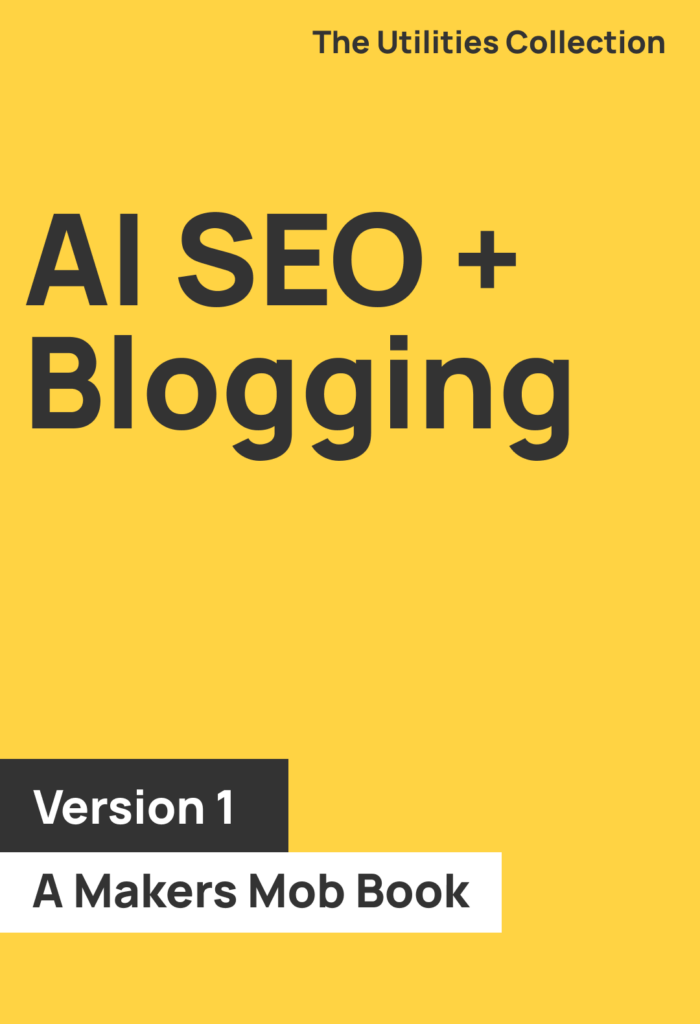This is about how to find blog post ideas, but let’s start off with a swimming analogy.
I learned to swim the way that I think a lot of little kids who grew up in the 80s learned to swim.
My dad threw me in the pool and waited to see what would happen.
This isn’t a good strategy. He had to jump in and save me as I just sunk to the bottom.
This is not unlike what will happen if you sit down in front of the WordPress screen and have no plan for what you are going to write.
You will become overwhelmed and sink. And then you’ll tell yourself you have writer’s block.
If my dad had given me some swimmies on my arms or maybe, oh, I don’t know, a SWIMMING lesson, I would have been prepared and had a plan for what to do once I broke the surface of the water.
It’s the same thing with writing your blog posts.
When you are just a little prepared ahead of time, you will become someone that has an endless list of blog post ideas and this post is going to show you a couple of different techniques that can make that happen.
Before we get into the actual ideas though let’s talk about the strategy because that is more important than the ideas.

Your Content Strategy
It’s easy to think that your goal is to simply churn out posts that just seem to work for your audience, but you need to actually have a strategy.
Why?
Because you probably want organic traffic. What’s that? It’s the traffic that comes from search engines and back in the day it was a great idea to just find random keywords and write content around them, nowadays things are different.
Google likes topics and that’s why we love to build Topic Clusters.
Don’t worry, your keyword research isn’t wasted. We still rely on keywords to know what specific content to write, but that content needs to fit within an overall topic.
That means you can’t just say you’re a lifestyle blogger and you write about anything and everything.
Yes, I know. There are some bloggers that get to do that but they started back in the good days of blogging and it worked. Today it’s a bit different.
It’s why some people think that blogging is dead when it really isn’t. It just changed.
So the first thing that you need to do is fully understand the topics of your blog. How you define these are going to dictate your strategy moving forward.
As you can see with Odd Noodle we have a number of topics that we cover and each of them has its own content hub:
Now that we have the topics what do we do with them? From here we can start to find content ideas.
Actually, before we take a step further let me say that the easiest thing you can do for your blog is start with one topic, flesh it out with a bit of content (10+ posts), and then move on to the next topic if you want. This is how we started Obsidian Tavern with the worldbuilding topic.
Just because I’ve listed a number of topics above that doesn’t mean you need that many topics.
We just help people build online businesses so for us there are a lot of bases to cover.
Okay, now we can move on to the ideas.

3 Simple Ways to Find Brand New Blog Post Ideas That Actually Bring Traffic
The goal of each of these tactics is to actually create content that people not only want to read, but that they are searching for as well.
The worst thing you can do is spend months writing content that nobody is interested in. That’s how one of my first blogs got started, but once I understand a simple concept things turned around.
What’s that concept?
It’s much easier to grow your blog when you write content that people want. Not the content that you think they need.

I’m trying to stop you from doing that.
1. The Alphabet Soup Method
This is the simplest and most effective method because it applies to every single niche. Instead of explaining it, let me show you how it works.
As you can see it’s pretty simple, but what is the point of doing this?
When you’re getting started with your blog and trying to build traction with it, you want to get on Google’s radar and that means you’re standing out with your content.
However, you’re probably in a niche where there are some pretty big dogs and those big dogs have done a great job with the big keywords by creating amazing content around them.
Now, you should shy away from doing the exact same, but you also want to spend time creating content around the keywords that get forgotten.
However, you don’t want to write for keywords that Google doesn’t even acknowledge exist. By using the Alphabet Soup Method, you’re letting Google tell you what keywords really do exist.
Google doesn’t make up the keywords that it auto-suggests. These are things that are being searched for.
What about search volume you ask? To be honest, in the long run that isn’t important.
What’s important is that you build out an awesome resource for your topic and this is why understanding your topics is so important.
It’s why we can have so many posts around just blogging when most people probably feel that 5-10 posts on this topic would be enough.
So how does this help you with Google? Well, if the big dogs aren’t addressing certain search queries and you are, then why shouldn’t Google show you some love by recommending your content that directly addresses a person’s search query?
In the Blog Simple Framework, we call these Beacon Posts because you’re planting Beacons to alert your readers that you’re there for them and they should come to see you.
You could get by JUST using this technique and you’d be fine. It’s very hard to run out of ideas by using this technique unless you learn how to write faster and really bang out the content at a ridiculous pace.

2. Scouring Pinterest and YouTube
The second method involves you looking for content that does really well.
The reason to use this method is that it will allow you to see what has already worked for your audience. It’s how I used to grow my early blogs by scouring Pinterest, seeing what works well in a niche, and then writing a post on that topic.
I made a lot of money doing this and also helped a ton of other bloggers find success with it as well.
This method still works but you don’t get as great of results simply because Pinterest changed.
And that’s fine. You just have to make some adjustments and that’s why it’s best to combine this tactic with the Alphabet Soup Method so that you get both popular content and long-tail content to create.
Finding popular things on YouTube is pretty simple because they have views clearly labeled. However, on Pinterest, you have to be a little bit sneaky to find the # of repins. Here is how you can do it.
To reiterate, what you’re doing is looking up your topics and finding what content seems to really resonate with your audience.
It’s not an exact science and unfortunately, Pinterest isn’t great for every niche, but on YouTube you should be able to get a feel for what really works and what probably won’t.
The biggest problem with this technique is that it is based on the popularity of something. A lot of the content ideas that you get from the Alphabet Soup method aren’t going to produce high numbers for you.
However, a whole cluster of them combined will.
So it’s also possible to find these Beacon Post ideas on Pinterest or YouTube and overlook them because they have lower numbers. You really have to use your own judgment to make sure you aren’t cutting off any potential for your site by dismissing a piece of content due to low numbers.
3. Look at the Competition
This one is pretty simple. Go to your competition and see what they’ve written then copy that topic and write your own blog post around.
That’s it.
How do you know which ones to go with? You really don’t, but sometimes you might see signs of what’s working like the following:
- most popular posts list in the sidebar
- a lot of comments
- a lot of social shares
It really comes down to being your call, however, you’ll find the really established sites don’t really waste time on topics that aren’t going to work.
So the larger the site, the more you can trust that the content is going to work for some portion of your audience.
Blog Post Ideas Are Everywhere
So there you have it. 3 ways to find an unlimited number of blog post ideas.
Keep in mind that you’re trying to put together a very useful resource that your audience will love and that can only happen if you fill out your topics with amazing content.
Part of the reason why it can be so hard to create a successful blog overnight is that you do need time to understand what content you need to create to make it all work.

